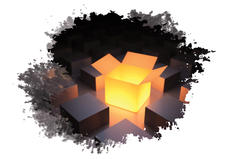Useful and lesser-known features of VirtualBox
Under the Hood

The VirtualBox virtual machine tool is a familiar sight on Linux systems, but many users don't access the full range of its powers. This article highlights some advanced features of VirtualBox that could save you some time and effort.
VirtualBox is a powerful virtualization tool that supports a variety of Windows and Linux guest systems. Most users control VirtualBox via the VirtualBox Manager. In this graphical user interface, you can set up a virtual machine with just a few mouse clicks. However, many VirtualBox users don't realize that the VirtualBox Manager also has some interesting advanced functions hidden in the depths of its settings menus and dialogs.
Be Friendly
Snapshots freeze the current state of a virtual machine and save it. You can then restore this state any time later with just a mouse click. Snapshots are especially useful for Windows guests: Before an update is due, you create a new snapshot to which can you return with just two mouse clicks in case of a failed update. Anyone who has ever had a function update blow up in their face under Windows will quickly appreciate this help.
To create a new snapshot, click the small black triangle in the top right corner of the VirtualBox Manager, next to the VM Tools icon, and select Snapshots (Figure 1). You will now see a list of all snapshots that have already been taken. At first, you will only see the Current state entry.
[...]
Buy this article as PDF
(incl. VAT)
